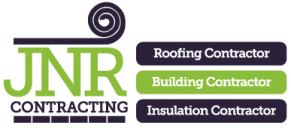Moisture damage, often an overlooked aspect of home maintenance, can silently wreak havoc in our homes and buildings. It’s a pervasive issue that can stem from various sources and manifest in numerous ways, often going unnoticed until significant damage has occurred.
This blog delves into the heart of moisture damage, unmasking its dangers and providing insights into its prevention and management.
The importance of tackling moisture-related issues cannot be understated, as they not only affect the structural integrity of a building but also impact the health and well-being of its inhabitants.
Understanding the implications of moisture damage is crucial in maintaining a healthy living environment. It’s not just about the immediate discomfort or unsightly damp patches that appear on walls.
The real danger lies in what’s not immediately visible – the gradual deterioration of a building’s core structure and the insidious health risks posed by mould and mildew.
As we explore this topic further, we aim to arm you with the knowledge needed to identify, prevent, and address moisture damage effectively.
Understanding Moisture Damage
Moisture damage is an insidious problem that can originate from various sources within a home. It could be as apparent as a leaking roof or as subtle as condensation forming on windows. Other common sources include plumbing leaks, poor ventilation, and even natural events like flooding.
Understanding these sources is the first step in combating moisture damage. Moisture damage manifests itself in many forms, from visible damp patches on walls and ceilings to the musty smell of mould and mildew. It’s a problem that not only affects the aesthetics of a home but also its structural integrity over time.
The science behind moisture damage is both fascinating and alarming. When excessive moisture permeates building materials, it sets off a series of reactions that can weaken the structure. Wood rots, metal corrodes, and plaster crumbles. In essence, moisture can attack a building at its core, silently and relentlessly.
Recognising the early signs of moisture damage is key. Look out for discolouration, warping, or the appearance of mould. These are tell-tale signs that moisture has found its way into places it shouldn’t be.
Immediate Effects of Moisture Damage
The immediate effects of moisture damage are often visible and unpleasant. Damp patches may appear on walls and ceilings, paint may peel, and a general sense of dampness can pervade a room. These signs, while unsightly, are just the tip of the iceberg.
What lies beneath is often a more significant cause for concern. The presence of dampness can lead to the growth of mould and mildew, which not only damages surfaces but can also release spores into the air.
The health implications of these spores cannot be understated. They can lead to a variety of respiratory issues, particularly in individuals with pre-existing conditions like asthma or allergies.
The presence of mould in a home can create an unhealthy living environment, with musty odours and poor air quality. It’s a problem that goes beyond aesthetics, directly impacting the well-being of those living within the affected environment.
Long-Term Consequences
If left unprotected, moisture damage can have severe long-term consequences. The structural integrity of a building can be compromised as materials like wood become weakened and rotten. This degradation is not just a cosmetic issue; it poses real risks to the safety of the building’s occupants.
Similarly, moisture can wreak havoc on electrical systems, leading to short circuits and potentially even fire hazards. This is a particularly insidious danger as it often remains hidden until it’s too late.
The impact of moisture damage extends beyond the physical structure of a building. It can also significantly reduce a property’s value, making it less appealing to potential buyers or renters.
This economic aspect is often overlooked but can be just as devastating as the physical damage. Aesthetic degradation is another consequence, as moisture damage can leave lasting marks on a property, detracting from its overall appearance and appeal.
Prevention and Mitigation
Preventing moisture build-up is key to avoiding the pitfalls of moisture damage. Simple measures, such as ensuring adequate ventilation, can go a long way. Regular inspections of potential problem areas like roofs, pipes, and basements are essential.
These preventative steps can help catch issues early before they escalate into more significant problems. Additionally, using dehumidifiers in damp-prone areas and ensuring good insulation can help in controlling indoor moisture levels.
When moisture damage does occur, it’s important to address it promptly. This might involve repairing leaks, improving ventilation, or in more severe cases, removing and replacing affected materials.
While some moisture issues can be tackled with DIY solutions, there are instances where professional help is necessary. Professionals can provide expertise in diagnosing the extent of the damage and recommending the most effective treatment methods.
They can also help in preventing future occurrences, ensuring that the solutions are not just temporary fixes but long-term improvements.
Conclusion
The dangers of moisture damage are both varied and significant. From the immediate impact on a home’s appearance and air quality to the long-term structural and health risks, it’s a problem that demands attention.
Understanding the causes, recognising the signs, and taking proactive steps to prevent and mitigate moisture damage is crucial in maintaining a safe and healthy living environment. We hope we have given you more of an understanding of why damp proofing is essential.
While the challenges are real, so are the solutions. With the right knowledge, tools, and approach, the perils of moisture damage can be effectively managed, ensuring our homes remain safe, healthy, and pleasant places to live.
